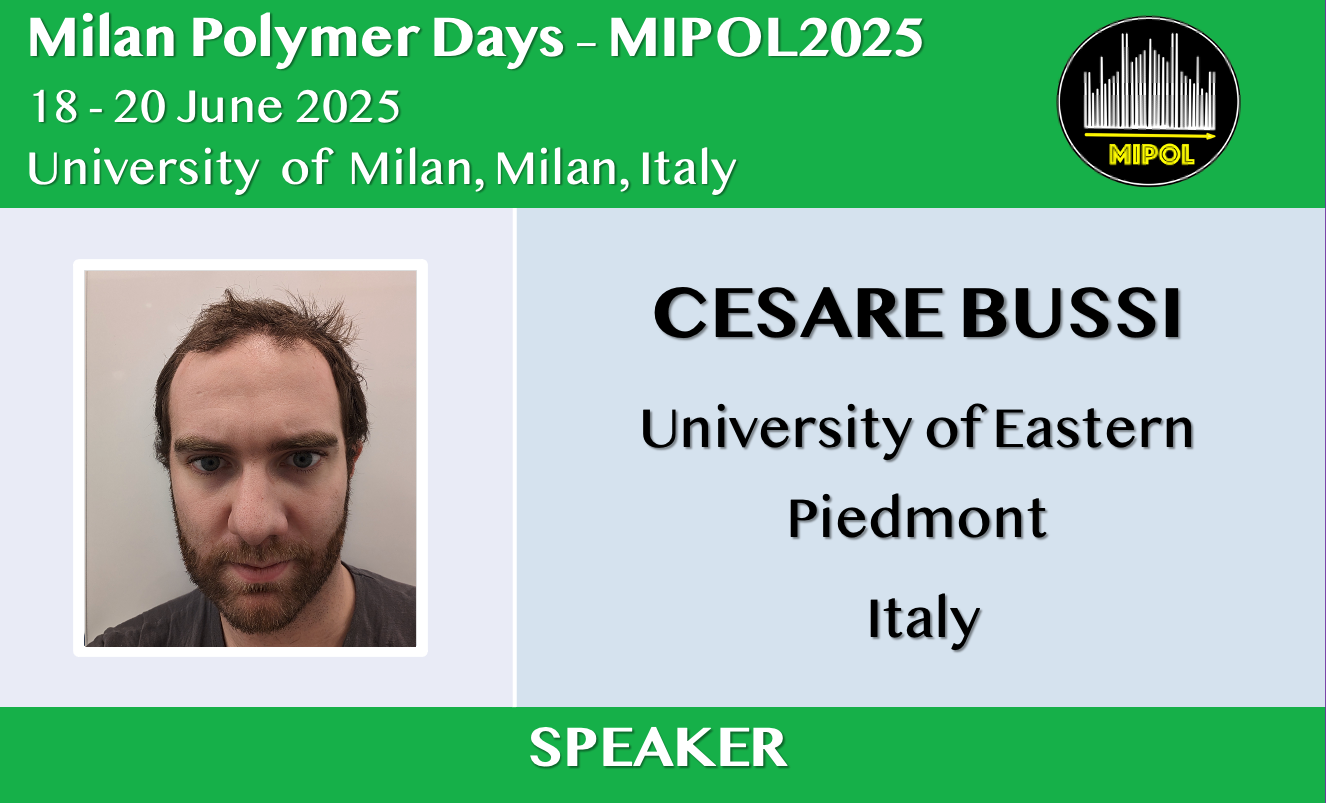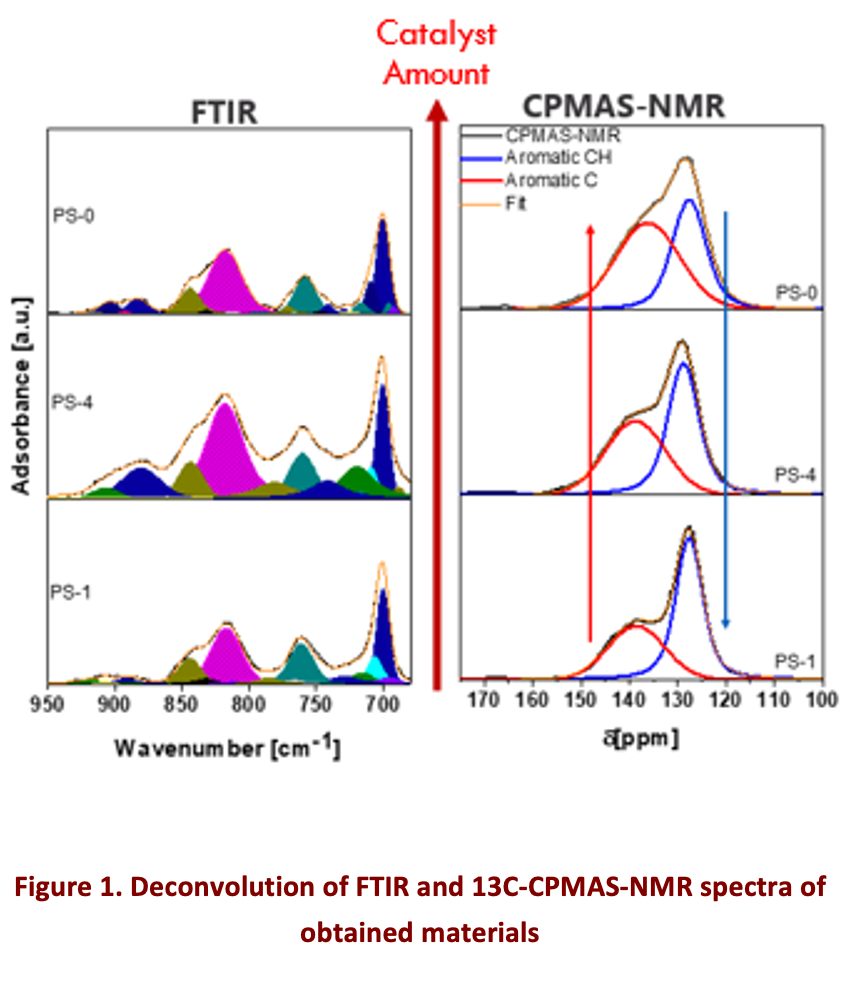Optimisation of synthesis parameters to enhance textural properties of HCPs derived from polystyrene waste
Abstract

In this study, the impact of varying the amounts of reagents on the properties of hyper-crosslinked polymers obtained via the Friedel-Crafts reaction was investigated. To this end, a factorial experimental design was implemented. The Friedel-Crafts reaction utilised polystyrene waste as precursors, which were hyper-crosslinked in the presence of formaldehyde dimethyl acetal (FDA) and dichloroethane [1], while systematically varying the molar ratio between aromatic rings and catalyst from a minimum of 1 to a maximum of 3, and the molar ratio between aromatic rings and solvent from a minimum of 20 to a maximum of 35. The characterisation of the obtained materials was carried out by TGA analysis, 13C-PMAS-NMR, FTIR and nitrogen physisorption @77K. The deconvolution of NMR and FTIR [2] spectra, enabled the evaluation of the degree of reticulation of the materials and the predominant types of substitution of the aromatic rings [3] (Fig. 1). A comparison of this information with specific surface areas (SSA) and pore volumes (total, micro and meso) was undertaken to facilitate a more profound comprehension of the effect of synthesis parameters on the textural properties of the obtained HCPs. This work also enabled the identification of the most effective synthesis parameters to produce materials with high SSA/high pore volume, while concomitantly minimising the amount of reagents required. The Brunauer-Emmett-Teller (BET) analysis was utilised to evaluate the surface areas, while the QSDFT model was employed to assess the pore volumes.

References
- G. Gatti, M. Errahali, L. Tei, E. Mangano, S. Brandani, M. Cossi, L. Marchese Nanomaterials 2019, 9, 726.
- Y. Bouramdane, M. Haddad, A. Mazar, S. Aît Lyazid, H. Oudghiri Hassani, A. Boukir Polymers 2014, 16, 3334.
- G. Socrates. Infrared and Raman Characteristic Group Frequencies. Tables and Charts. (John Wiley & Sons, Ltd, 2001).
Acknowledgments
The ECOSTORE-H2 project leading to these results was founded under the Italian National Recovery and Resilience Plan (NRRP), M2C2-3.5 of Ministero dell‘Ambiente e della Sicurezza Energetica funded by the European Union – NextGenerationEU. Project code: RSH2A_000031, CUP: F67G22000140004.

